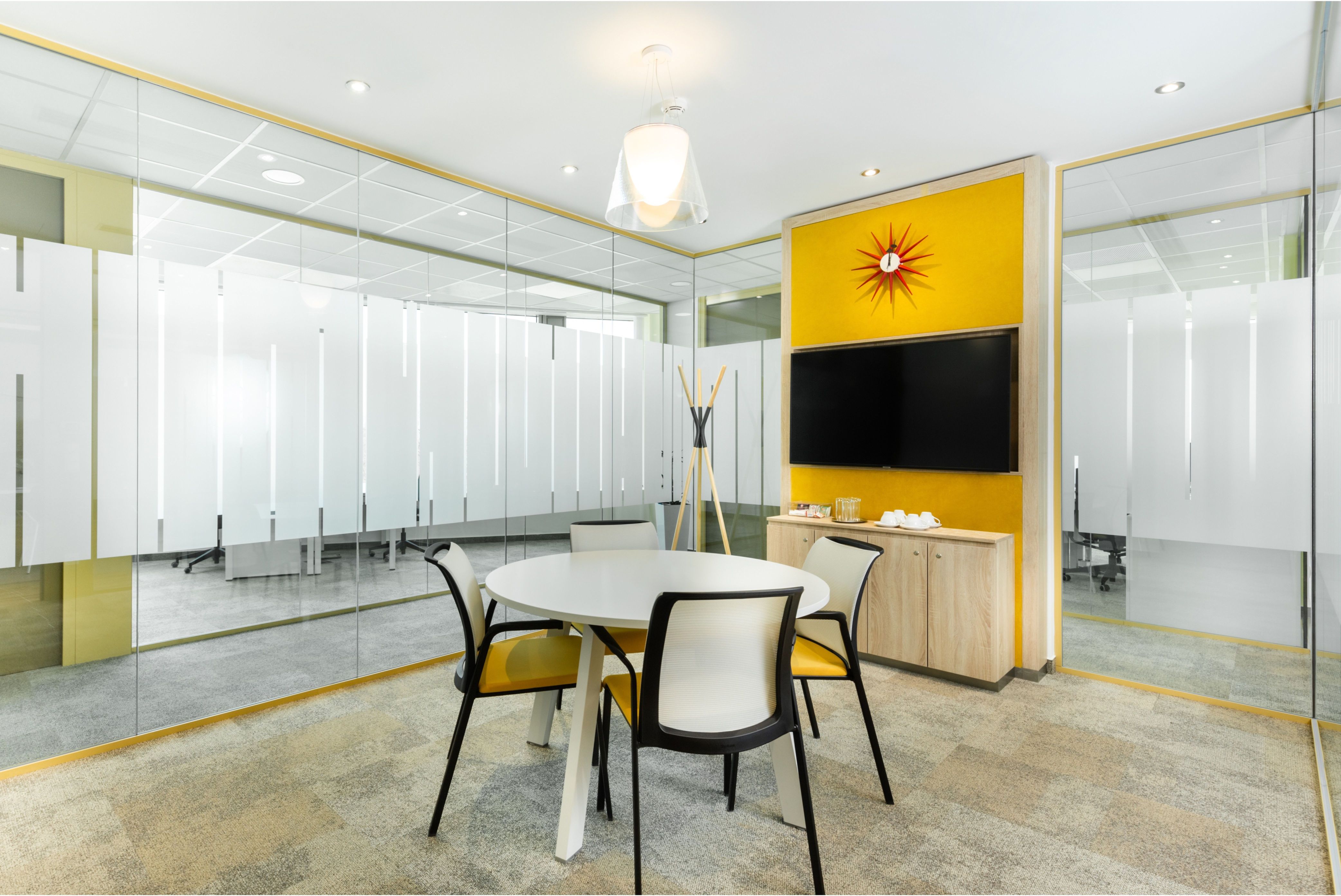Developers Must Meet Demands of Tenants’ Staff
.jpg másolata)
The Academia Office lobby is typical of the new generation of community spaces developers are creating for tenant staff and the public alike. It is open to visitors during office hours.
The recently completed 12,500 sqm Academia office redevelopment and renovation project by ConvergenCE and Europa Capital in Pest’ District V is expected to achieve its final Well “Platinum” and “Gold” accreditation this spring. Successful developers now need to meet staff demands along with the additional costs, says real estate editor Gary J. Morrell.
“Right from the beginning of the Academia Office building renovation, the focus was on the individual, the employee, and the visiting guest. Well, developed over 10 years and supported by the latest research, provides certifications to buildings and organizations that offer the best conditions for optimal performance, prioritizing physical and mental well-being,” says ConvergenCE, the developer in this case.
Some might describe these types of amenities as sophisticated, but sustainability consultant and Well-assessor Regina Kurucz takes a slightly different viewpoint.
“Interestingly, the most modern offices satisfy the most basic biological needs: they are bright, with fresh air, with plenty of plants, clean drinking water, peasant acoustics and an environment suitable for establishing meaningful relationships,” she argues.
Aurelia Luca, executive vice president of operations for Hungary and Romania at Skanska, sees newly developed class “A” offices as having a more human-centered and eco-conscious design in response to tenant demand.
“These spaces use natural materials, providing a warm and inviting feel. Large windows ensure the proper ratio of natural light, creating a bright and lively atmosphere. There are thoughtfully placed and customized lighting changes according to the surrounding light conditions, and set differently within the same space,” she explains.
“Biophilic design is a key element as well, used not just for aesthetic purposes but also for improving air quality and bringing a sense of calm. These features not only make offices visually attractive but also ensure they are environmentally responsible and conducive to the well-being of their occupants,” Luca insists.
Building “attractive workspaces” has become a dominant mantra for high-end office developers, aware that their marker shifted markedly in the aftermath of COVID.
“In our experience locally, as well as in our wider international portfolio, tenants are generally drawn to contemporary office designs with non-traditional layouts. As a result of past events, such as the emergence of new home office policies, we have witnessed the birth of a more collaborative working style,” says Máté Galambos, leasing director at Atenor, another leading Hungarian and CEE office developer.
‘Homelike’ Ambiance
“Along with the new working style, it has become increasingly important to create attractive workspaces that provide ample opportunities to connect with colleagues and business partners. Instead of fixed workstations, interior designers often propose activity-based working layouts with a more ‘homelike’ ambiance as far as appearances go,” he acknowledges.
A fundamental requirement is to have some basic amenities in the immediate surroundings of the office building, and ideally inside it. These include bicycle usage facilities and commercial food and beverage units. Popular services include cafés, restaurants, ATMs, parcel terminals, pharmacies and much more.
“[Our] Váci Greens [project] laid the groundwork for the concept, as it was designed to be a large campus-style office development with a plethora of services on the ground floor,” Galambos argues.
Functionality is crucial when it comes to the look and feel of newly developed or renovated quality offices. There is an emphasis on collaborative areas, meeting rooms, and communal spaces that facilitate teamwork and creativity, argues Csaba Zeley, managing director of ConvergenCE, responsible for the abovementioned Academia Offices.
He adds that offices are increasingly designed to be flexible, accommodating various work styles and tasks. Open floor plans with movable furniture and modular layouts allow easy reconfiguration to suit changing needs. Improved energy efficiency through technology, such as smart lighting, climate control, and integrated communication systems, will likely become more prevalent.
When it comes to sustainable design, green building practices such as refurbished or environmentally friendly materials are likely to be prioritized, alongside creating spaces that prioritize employee well-being, with features like natural light, indoor plants, and ergonomic furniture.
Upgrading and integrating advanced technologies, such as smart building systems, high-speed internet, and collaboration tools, may require significant upfront investments but are must-have features for future-proof buildings in the view of Zeley.
“Fitting out gyms can definitely be CapEx intensive, as well as investing in high-quality furniture that can support a flexible and adaptable workspace. It is crucial for developers to carefully assess the specific needs and expectations of their target tenants and workforce,” he suggests.
Understanding the Trends
“While implementing these features can come with upfront costs, they may contribute to long-term tenant satisfaction, retention, and increased demand for the developed spaces. Additionally, understanding market trends and staying ahead of evolving workplace expectations can position developers as leaders in providing innovative and sought-after office spaces,” Zeley adds.
Overall cost consequences could be significant, but in most cases, the financial burden of an ultra high-end fit-out is shared between the tenant and the developer, Galambos of Atenor points out.
For landlords with older, less energy-efficient assets, it might be the case that the initial investment in getting their buildings up to par with more sustainable and modern office buildings is the most significant part of their overall budget, even before any fit-out work could commence. However, in the case of new stock, the equation includes the cost of build-out according to current tenant requirements, he adds.
Skanska’s Luca says incorporating top-notch technologies and premium quality materials inevitably comes with an elevated price tag.
“However, such investments are natural for ‘A’-category office buildings, as these features are critical to meeting the high standards expected in such developments. I do believe that there is a higher cost in not meeting these expectations,” she warns.
Talk of the death of the office, which became common during and immediately after the pandemic, now seems as wide of the mark as the claim that history had ended when the Berlin Wall came down. Colliers argues that demand for prime locations and modern, green, energy-efficient, and ESG-compliant office buildings will remain stable, leading to higher vacancy rates in older office spaces.
“Additionally, there is a greater emphasis on employee needs in today’s business environment, prompting more companies to choose central, easily accessible locations with a wider range of services, rather than the outskirts or suburban areas,” the consultancy says.
“Overall, the office market will continue to be tenant-driven in 2024, with flexibility in contracts remaining of fundamental importance. We do not anticipate a significant turnaround in vacancy rates, particularly in lower-grade properties and locations outside central submarkets,” concludes Colliers.
This article was first published in the Budapest Business Journal print issue of January 26, 2024.
SUPPORT THE BUDAPEST BUSINESS JOURNAL
Producing journalism that is worthy of the name is a costly business. For 27 years, the publishers, editors and reporters of the Budapest Business Journal have striven to bring you business news that works, information that you can trust, that is factual, accurate and presented without fear or favor.
Newspaper organizations across the globe have struggled to find a business model that allows them to continue to excel, without compromising their ability to perform. Most recently, some have experimented with the idea of involving their most important stakeholders, their readers.
We would like to offer that same opportunity to our readers. We would like to invite you to help us deliver the quality business journalism you require. Hit our Support the BBJ button and you can choose the how much and how often you send us your contributions.











